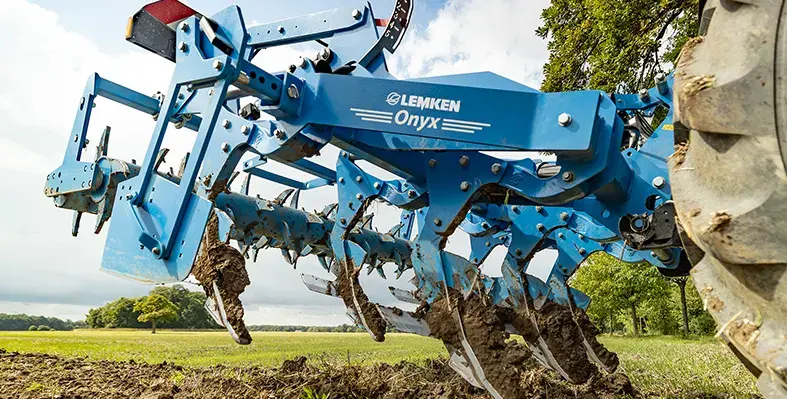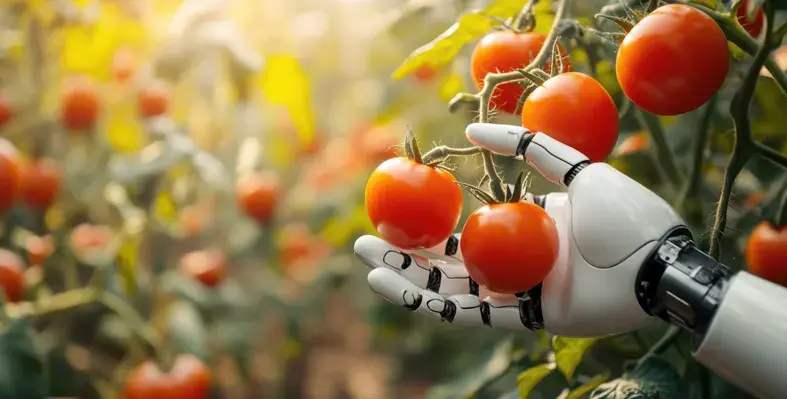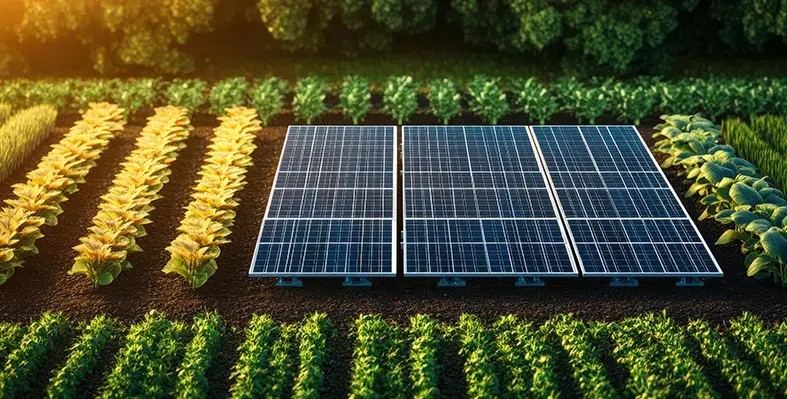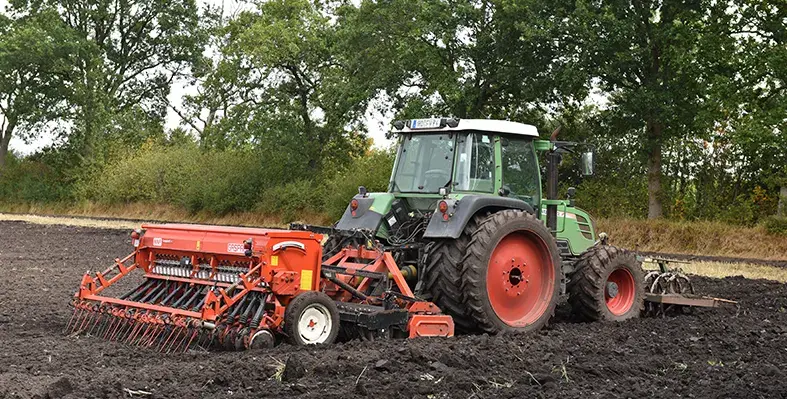
The mixing share with wings and the double spiked roller ensure the desired working result up to a working depth of 40 cm. (Image credit: LEMKEN GmbH & Co.)
LEMKEN has introduced the Onyx subsoiler, an innovative tillage implement designed to offer farmers a robust and versatile solution for deep soil loosening
With working depths of up to 60 cm, the Onyx completes LEMKEN’s range of tillage tools and provides a professional option for those seeking efficient soil management. Available in two rigid versions, the Onyx MR/300 (3.0 metres working width) and Onyx MR/400 (4.0 metres working width), this subsoiler is built to meet the highest demands of modern farming.
The Onyx subsoiler is distinguished by its simple yet exceptionally durable design. Unlike many competitors, the frame is not assembled but is carefully welded together, ensuring maximum stability and longevity. It also features an impressive 90 cm underframe clearance, which provides ample space to the base frame even at maximum working depth. The design includes two beams spaced 84 cm apart, ensuring easy access for maintenance and inspection, further enhancing its user-friendly nature.
At the heart of the Onyx is its sophisticated share system, available in two variants designed for different tillage effects. The shares are positioned at a 42.5 cm line spacing and are hard-faced as standard, with an option for carbide coating to withstand the toughest working conditions. The OM (Onyx Mixing share) is designed for medium-depth loosening (25 to 40 cm), promoting soil structure improvement and effective levelling through intensive mixing. The OL (Onyx Loosening share), on the other hand, is meant for deep loosening (40 to 60 cm), breaking up compacted soil layers like plough pans. The OL share creates cracks in the soil, allowing for better water infiltration through micro-cracks that enhance soil structure.
Both share types can be equipped with wings, which improve soil loosening by ensuring more uniform mixing of the soil and better integration of organic matter. This makes the Onyx subsoiler an ideal tool for both conventional tillage and minimal tillage systems.
For levelling and reconsolidation of the loosened soil, LEMKEN offers two roller options: the DSW 580 double-spiked roller and the RSW 600 tube bar roller. The quick-change roller system allows farmers to easily switch between rollers, offering maximum flexibility to adapt to different soil conditions.
The Onyx will be available in limited numbers starting from 2026, providing farmers with an additional tool to enhance soil health and productivity. With this new addition, LEMKEN continues to offer a wide range of products suited for various tillage methods, from traditional ploughing to minimum tillage and strip till applications.











